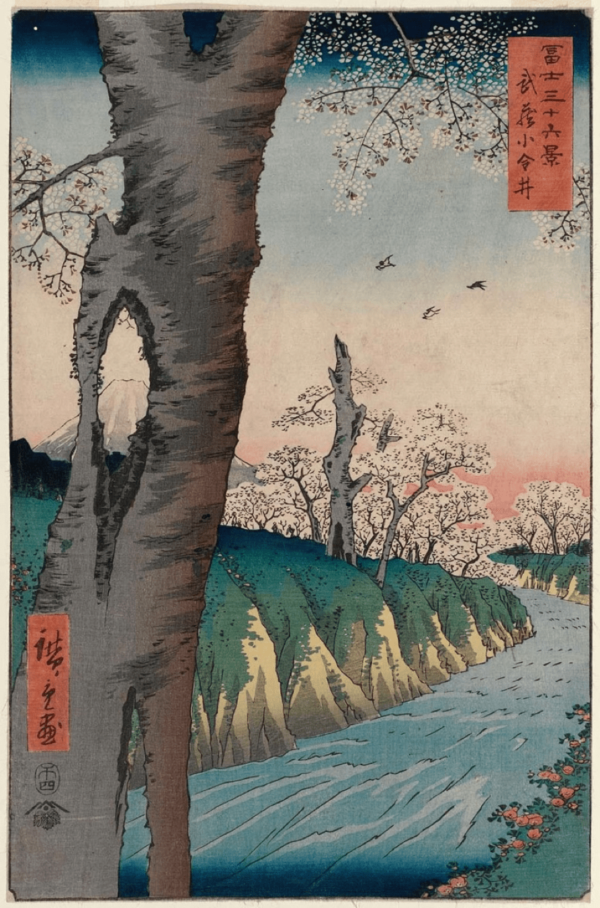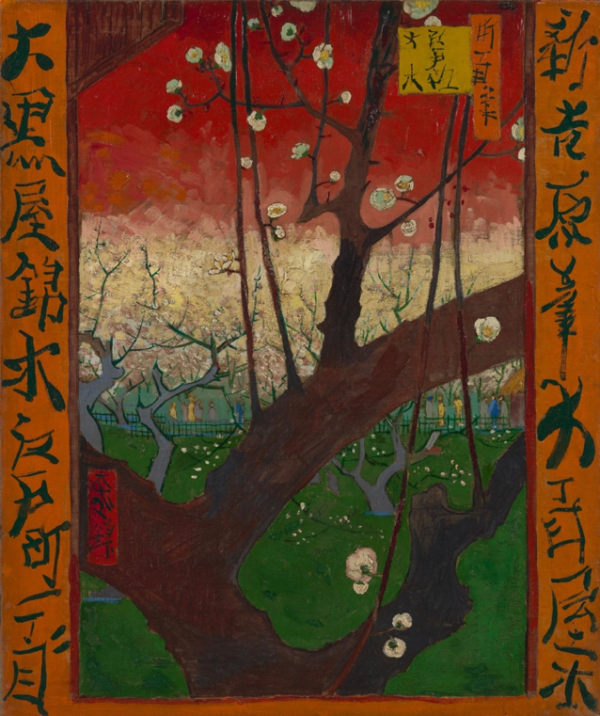Utagawa Hiroshige at the Ashmolean Museum
The Japanese have always considered Mount Fuji to be the greatest symbol of Japan. This print which is at the Ashmolean Museum in Oxford, shows one from a series of Hirsohige’s 36 views of Mount Fuji, a homage to his country but also to his contemporary Hokusai and his series with the same title (c.1833). Both Hiroshige and Hokusai brought to life the then less appreciated genre of landscape, adopting a fresh and bold style. Koganei in Musashi Province and the series it is from is also unusual for being in vertical format.

In the UK in early spring, we celebrate National Apprenticeship week, marking the success of apprenticeships whilst also encouraging people to apply for them. Apprenticeships have existed for a very long time and still continue today. Japan and China, as elsewhere, have an ancient history of apprenticeships, in which students copied the style and craft of their masters from generation to generation.
In the early 1800s, a young aspiring artist called Utagawa Hiroshige undertook an apprenticeship. He decided to enter the then famous school of the popular artist Utagawa Toyokuni. Unfortunately, Toyokumi had too many students and recommended him to his friend Utagawa Toyohiro.
Hiroshige specifically wanted to learn ukiyo-e which meant ‘pictures of the floating world’, They were mass produced images of everyday life in Japan for popular consumption in the Edo period (1615-1868). These prints were inexpensive, costing the same as a bowl of rice. Ukiyo-e is often associated with colour woodblock prints, which Hiroshige was keen to learn. Although he would have learned the craft of his master, Hiroshige went on to develop his own beautiful ukiyo-e prints which became very well known. This process of creating was between ‘the artist, engraver, printer and publisher’ and although Hiroshige designed the prints, there would have been a team of skilled craftsmen responsible for making them.
His master Toyokuni’s interest in landscapes, a minor genre at the time, influenced the young apprentice. The famous artist Hokusai had also pioneered the genre into a major theme of ukiyo-e prints in Japan in the 1830s. Hiroshige made thousands of prints with a wide range of subject matter including famous actors and mythological figures, but he is most famous for his landscape prints which ‘capture brilliantly the effects of season, weather and time of day.’[2]
In this print, we are situated on a river bed, with the river dynamically emerging from the bottom left and fading into the distance with the red rays of the sun just visible through the trees. Flanked on the sides of the river bank are cherry blossom trees. Mount Fuji is seen through a hole in an ageing tree in the foreground. The fluid lines in the water create a feeling of the current moving. Prints like these made a strong impression on European avant-garde artists, offering a new way of looking at landscapes. It is said that the way such work arrived to the eye of the European avant-garde was via increasingly ubiquitous imported domestic products such as tea, which were wrapped in decoratively printed papers of the Oriental masters’ works. The Post Impressionists, and particularly Van Gogh, were attracted to the bold outlines, simplified shapes and bright colours which artists like Hiroshige used.
In this print, we are situated on a river bed, with the river dynamically emerging from the bottom left and fading into the distance with the red rays of the sun just visible through the trees. Flanked on the sides of the river bank are cherry blossom trees.
Mount Fuji is seen through a hole in an ageing tree in the foreground. The fluid lines in the water create a feeling of the current moving. Prints like these made a strong impression on European avant-garde artists, offering a new way of looking at landscapes. It is said that the way such work arrived to the eye of the European avant-garde was via increasingly ubiquitous imported domestic products such as tea, which were wrapped in decoratively printed papers of the Oriental masters’ works. The Post Impressionists, and particularly Van Gogh, were attracted to the bold outlines, simplified shapes and bright colours which artists like Hiroshige used.
“And we wouldn’t be able to study Japanese art, it seems to me, without becoming much happier and more cheerful, and it makes us return to nature, despite our education and our work in a world of convention.”
Vincent Van Gogh to his brother Theo, September 1888

Flowering Plum Orchard (After Hiroshige) by Vincent Van Gogh – Photo credit, Van Gogh Museum